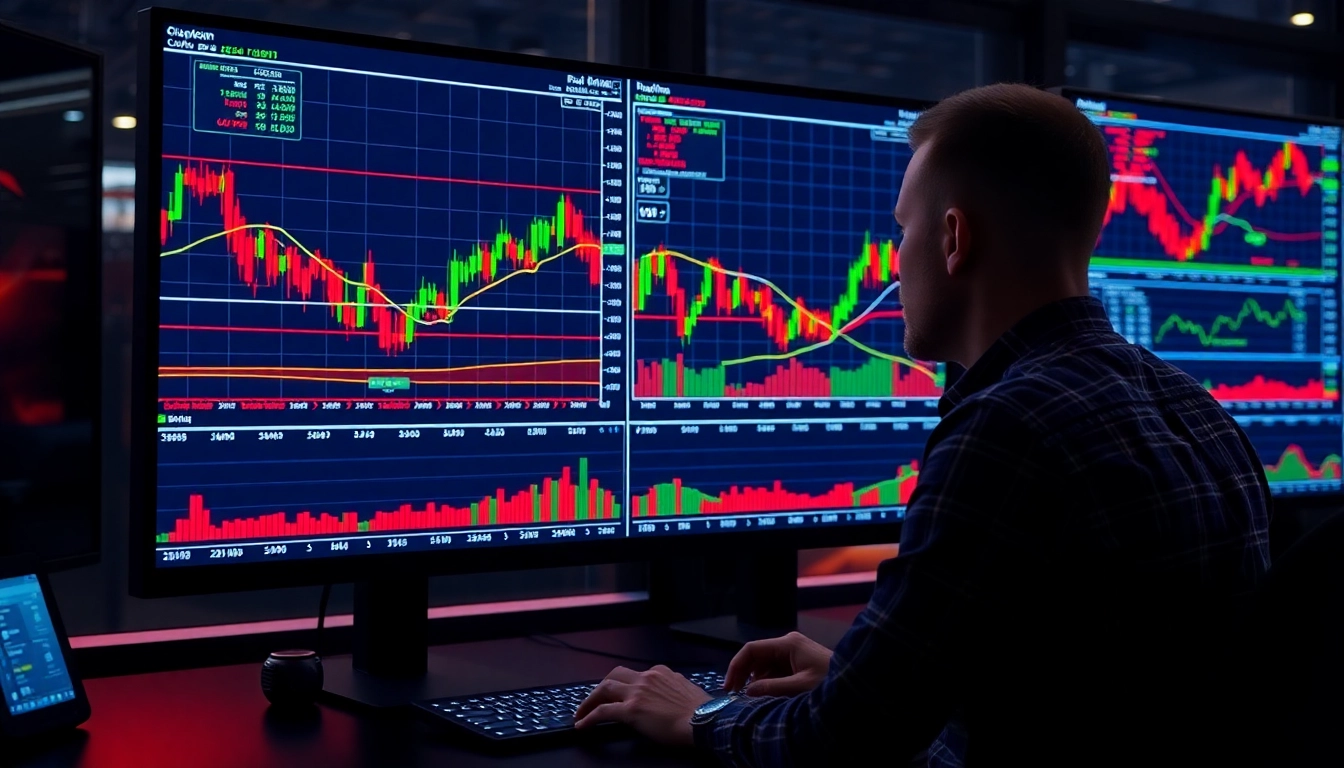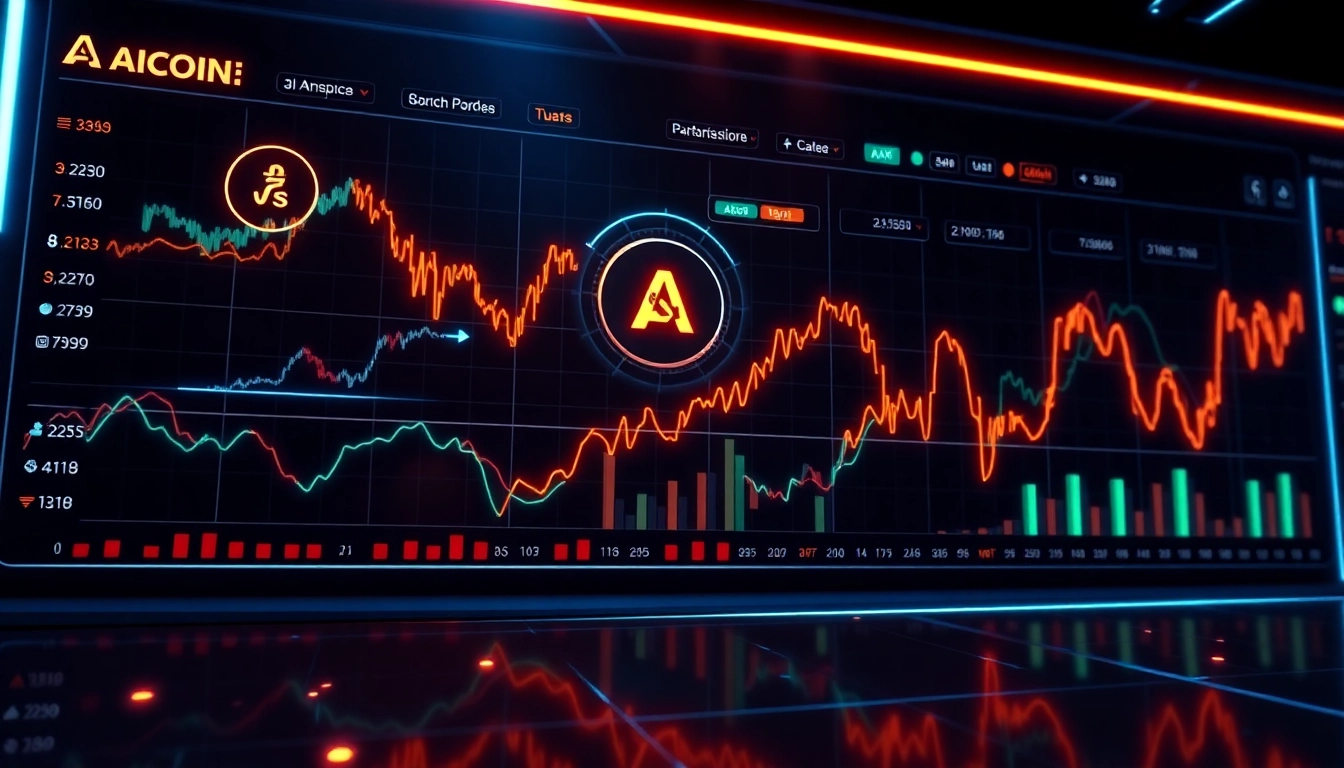Current Trends and Insights in UK Commodities Investment News
In today’s dynamic global economic landscape, the UK commodities market serves as a vital barometer of economic health and investor sentiment. From fluctuating gold prices reaching historic highs to volatile energy markets influenced by geopolitical tensions, understanding the current trends within UK Commodities Investment News is essential for investors aiming to optimize their portfolios. This comprehensive overview explores the multifaceted factors shaping commodities, strategic investment approaches, and future opportunities that are emerging amidst rapid market shifts.
Global Influences on UK Commodities Markets
The UK commodities landscape is profoundly impacted by international forces. Notably, the recent surge in precious metals like gold, which soared past $3,500 per ounce, reflects underlying global economic uncertainties, inflation hedges, and investor risk aversion. Concurrently, energy commodities such as oil and natural gas are subject to geopolitical developments, including US-China trade relations and Middle Eastern tensions, which influence supply and demand dynamics.
For example, recent data shows oil prices declined slightly but are still on track for weekly gains, influenced by US-China trade extensions and production adjustments by OPEC members. Additionally, China’s weak economic indicators have led to slipping iron ore futures, impacting global steel production and construction sectors. These influences underscore the interconnectedness between UK commodities and worldwide economic health.
Further, US Federal Reserve policies and US labour market data heavily sway commodity prices, as seen with the dollar’s slight fluctuations in response to rate-hike expectations and employment figures. As such, UK investors must monitor international developments and their ripple effects through global commodity channels.
Impact of Currency Fluctuations on Commodities
Currency movements play a critical role in commodities trading, often acting as catalysts for price changes. The recent depreciation of the US dollar, which dropped against the yen and euro, tends to elevate commodity prices measured in USD, benefiting exporters like gold and oil. Conversely, a strengthening dollar can suppress international commodity costs, impacting UK importers and domestic prices.
In the current scenario, the dollar’s decline has aided record gold levels, with the precious metal surpassing its previous peak. For investors, understanding the inverse relationship between the dollar and commodities is vital for timing entry and exit points. Hedging strategies can mitigate risk, especially during periods of heightened currency volatility caused by divergent monetary policies or political uncertainties.
For example, when the US Federal Reserve signals rate cuts or maintains dovish stance, as market speculation suggests, the dollar often weakens, potentially boosting gold and other dollar-denominated commodities. Conversely, political developments such as calls for the resignation of Fed officials can induce volatility, requiring proactive risk management.
Recent Price Movements and Market Volatility
Recent market data highlights significant fluctuations across commodities. Gold’s rally to a record $3,501.59 ounce illustrates a classic safe-haven response amid inflation concerns and US economic data releases. Meanwhile, crude oil prices experienced dips yet maintained a weekly upward trajectory, demonstrating resilience amid global economic uncertainties.
Energy commodities face volatility driven by geopolitical events—including US adviser’s comments on oil policies and extended US-China tariff pauses—which have prompted price corrections. The oil market’s sensitivity underscores the importance of tactical timing for traders, compounded by the broader global risk environment and supply chain considerations.
Apart from metals and energy, agricultural commodities also display volatility; weak Chinese crop data has softened futures, reflecting concerns about global supply chains. Investors should adopt diversified strategies and utilize technical analysis to navigate these price swings effectively.
Strategies for Investing in UK Commodities
Risk Management in Commodity Portfolios
Mitigating risk is paramount when investing in commodities, given their inherent volatility. Practical approaches include diversification across different sectors — metals, energy, agriculture — and employing options or futures contracts to hedge against adverse price movements. Regularly reviewing macroeconomic indicators and geopolitical developments helps anticipate market shifts and adjust holdings accordingly.
Leveraging Market Data for Investment Decisions
Data analysis is crucial for making informed decisions. Monitoring real-time market indicators such as inventory levels, production reports, and political developments provides valuable insight. Advanced tools, including AI-driven analytics and sentiment analysis, can forecast potential market turning points, enabling proactive strategies.
Long-term vs. Short-term Investment Approaches
Long-term investors may focus on fundamentals like resource scarcity, technological advances, and regulatory environments, positioning for periods of growth such as the increasing demand for sustainable energy or metals required for EVs and renewable infrastructure. Short-term traders, however, capitalize on volatility and cyclical swings, utilizing technical analysis, news catalysts, and momentum trading to generate quick gains.
Key Commodities in UK Investment News
Precious Metals: Gold and Silver Trends
Gold continues to attract investor attention, hitting new record highs, driven by inflation fears, geopolitical tensions, and US monetary policy outlooks. Silver, often viewed as a broader industrial metal, exhibits correlated movements—yet its price remains sensitive to global manufacturing activity and currency trends. Diversification within precious metals can provide a hedge against inflation and currency shocks.
Energy Commodities: Oil and Gas Developments
Oil prices, influenced by US and OPEC production decisions, geopolitical crises, and US-China relations, present opportunities for traders and investors. Recent comments by US advisers hinting at extended pauses on tariffs and production cuts have temporarily buoyed prices. The re-emergence of energy transition policies also influences natural gas and renewables investments.
Agricultural Commodities: Crop and Livestock Market Updates
Global weather patterns, supply chain disruptions, and geopolitical conflicts impact agricultural prices. Weak Chinese crop data has contributed to bearish sentiment on grains and soybeans, while livestock markets are affected by feed prices and sustainability policies. Monitoring weather forecasts, trade negotiations, and policy changes is essential for strategic positions.
Regulatory and Economic Factors Affecting UK Commodities
Government Policies and Trade Agreements
Trade agreements and regulatory changes significantly influence commodities. The UK’s alignment with EU standards, post-Brexit trade agreements, and the potential for new tariffs or sanctions impact export-import flows. The government’s approach to sustainability, carbon pricing, and resource extraction regulations further shape market sentiment and investment flows.
Inflation, Interest Rates, and Market Outlook
Inflation remains a key driver—rising US and UK inflation rates have prompted increased gold buying, and central bank policies aim to manage inflationary pressures. Interest rate policies influence currency stability and commodity investment attractiveness, creating both opportunities and risks for traders and long-term investors.
Environmental and Sustainability Considerations
Sustainable investing influences commodity markets through policies favoring greener energy and responsible resource extraction. Investors increasingly prioritize ESG factors, affecting sectors like mining and energy. Emerging innovations, such as green metals and renewable energy commodities, open new avenues for strategic investment.
Future Outlook and Emerging Opportunities in UK Commodities
Technological Innovations and Market Disruptors
Advancements in AI and blockchain are transforming commodities trading and management. For instance, AI-powered R&D accelerates new material discoveries and efficiency improvements, while blockchain enhances transparency in supply chains. Such innovations can present opportunities for early adopters to gain competitive advantages.
Emerging Markets and Investment Trends
Markets in renewable energy metals like lithium and cobalt are poised for growth, driven by global decarbonization efforts. Similarly, recycled materials and circular economy initiatives are gaining traction, offering sustainable investment avenues. Understanding these trends enables investors to position for future demand peaks.
Expert Predictions and Strategic Recommendations
Experts suggest that gold will continue to act as an inflation hedge amid ongoing geopolitical tensions, while energy markets will see increased volatility due to geopolitical and economic factors. Investors should maintain diversified portfolios, leverage data analytics, and stay informed of regulatory shifts. Embracing technological innovations and focusing on sustainability could unlock new growth channels in UK commodities.



